Clonboy
Houses within 5km of this house
Displaying 19 houses.
Houses within 5km of Clonboy
Displaying 19 houses.
| House name | Description | |
|---|---|---|
| Hilton Park | According to Shirley it was originally called Maddenstown, changed circa 1780 to Hilltown or Hilton. The Reverend Samuel Madden purchased the estate in 1734 and built the house. It was badly burnt in 1803. In Griffith’s Valuation the buildings were valued at £110 and held by John Madden in fee. The house was extensively enlarged in the 1870s for John Madden by William Hague. The gardens were designed by Ninian Niven. Hilton Park is still the family home of the Madden family where they offer luxury accommodation and authentic country house food, see http://www.hiltonpark.ie/ |
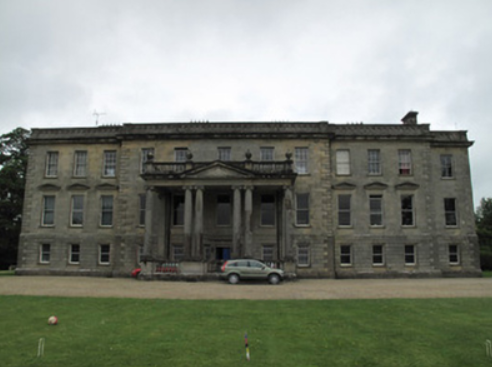
|
| Ballynure House | Built in the late 18th century, this house was originally the home of the Forster family. Described in the Ordnance Survey Field Name Book as a ‘handsome modern structure’. Griffith’s Valuation records William Forster as the occupant holding the property in fee. The buildings were valued at £50. The Haire Forsters lived here at the beginning of the 20th century but by 1911 were leasing Ballynure to William Maxwell Scott Moore, Resident Magistrate. This house is now a ruin. |
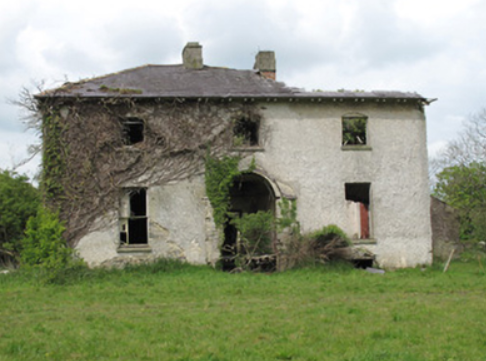
|
| Lisnaroe | This house was situated very close to the border with county Fermanagh. On the 1st edition Ordnance Survey map (1836) extensive gardens and some plantations are evident surrounding this house. It is described in the Ordnance Survey Field Name Book as ‘a good dwelling house’, the residence of Nicholas Ellis, agent to Sir Thomas Barrett Lennard. Ellis was still living there at the time of Griffith’s Valuation when the buildings were valued at £20. The Bamford family appear to be resident at the beginning of the 20th century. This house no longer exists. | |
| Mount Salem | Mount Salem situated on the Barrett-Lennard estate was marked on the 1st edition 6 inch Ordnance Survey map (1836) and on the later 25 inch map. It was located close to the border with county Fermanagh, just west of the town of Clones. The Reverend Adam Averell, a Methodist minister, died at Mount Salem on 10 January 1847, aged 93. Griffith’s Valuation records Amelia J. Conts as the occupant, holding the property from James Gregg. The buildings were valued at £13. In the early 20th century the McKenna family were resident but the house is now demolished. | |
| Salem Cottage | Located on the Barrett-Lennard estate, valued at £10 in the 1850s and occupied by James Gregg. James Gregg, farmer, of Clondregole, a townland adjacent to Mullanamoy, died on 15 September 1896 (NA, Wills and Administrations, 1897). A building is still extant at this site. | |
| Ferney Hill | A house at this site was valued at £10, located on the Barrett-Lennard estate and held by Mary Jameson at the time of Griffith’s Valuation. The National Inventory of Architectural Heritage dates the present house circa 1890. Mulligan writes that it was built for a town merchant Mr M. Maguire. |
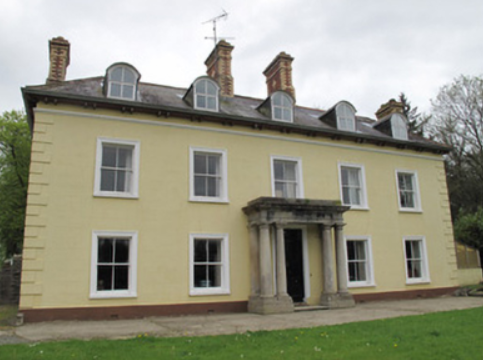
|
| Cloncurrin House | This house was not built at the time of the 1st edition 6 inch Ordnance Survey map published in 1836. At the time of Griffith’s Valuation in the 1850s it was occupied by Francis Fitzgerald who held the property from Sir Thomas Barrett-Lennard, when it was valued at £25. Occupied by John A. Moore in 1901 and still in use as a residence. |
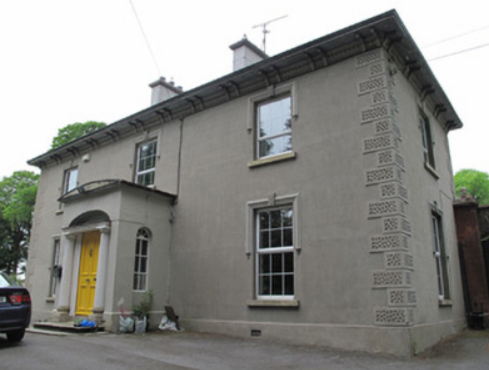
|
| Drumard | The Ordnance Survey Field Name Book states that a house in Burdautien was the residence of Cockran, agent to the Madden estate. The National Inventory of Architectural Heritage dates the house circa 1810. Griffith’s Valuation records William Cochran as the occupier holding the property in fee. It was valued at £30. In the 1860s Drumard appears to be leased by William Cochran to a family named Elliott. Michael Elliott died at Drumard in 1872. The house is still a residence. |
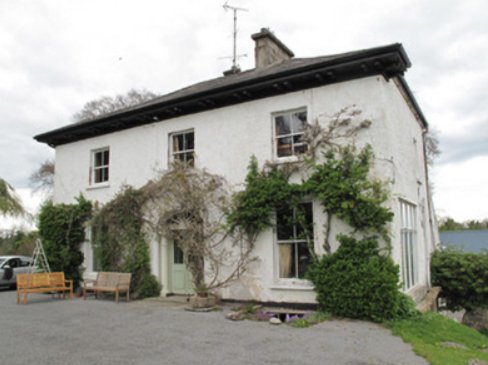
|
| Munnilly House | This house is marked on both the first edition 6 inch Ordnance Survey map and the 25 inch map but the building no longer exists. It was the home of the Shegog family. It was situated on the Barrett-Lennard estate and in the mid-19th century was valued at £14 and occupied by William Shegog, born 1824. He was the eldest son of George Shegog, a Justice of the Peace and paymaster of the Fermanagh Militia and Margaret Hamilton. George was the son of John Shegog of Mount Carmel and the family came to Ireland in 1760 from Lubec, Lower Saxony. | |
| Teehill Cottage | The National Inventory of Architectural Heritage dates this house circa 1820. It was built on the Barrett-Lennard estate before the nearby Ulster Canal was constructed. Valued at £10 at the time of Griffith’s Valuation it was occupied by Henry Brown who held it from Thomas Robinson. Home of Edward Scott at the beginning of the 20th century. |
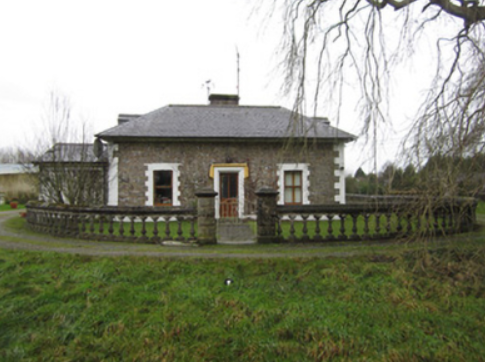
|
| Cloncallick | Built close to Munnilly Lough on the Barrett Lennard estate post Griffith’s Valuation as the building at this site at the time was only valued at £8. It was occupied by Joseph Moorhead. This house has out buildings with a date stone of 1865 and there is a gate lodge at the entrance gate. The Moorehead family were still resident in 1901 and 1911. |
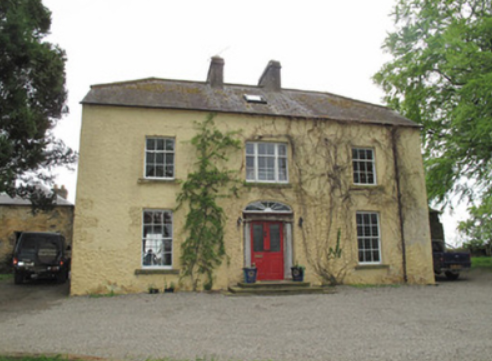
|
| Clonkeen Cottage | This house was not built at the time of the first Ordnance survey in the 1830s. It was located on the Lentaigne estate just north of the town of Clones. William Tugman was the occupant at the time of Griffith’s Valuation when the house was valued at £16 and held from Samuel Nicholl. A building still occupies this site. | |
| Scarvy House | Scarvy was the home of Major Campbell Graham in the 1830s. About this time the original house, which is marked on the 1st edition 6 inch Ordnance Survey Map (1836), was replaced by a new one. The Ordnance Survey Field Name Book records ‘Near the centre of the townland there is a good house with large orchards, gardens etc belonging to the proprietor but it is going to be replaced by a larger one near the same spot which is now building.’ By about 1860 the buildings were valued at £38 and held by Lydia Campbell from Thomas de Burgh. Occupied by the Duggan farming family in 1901. Not occupied in 1911 but still held by Colonel de Burgh. |
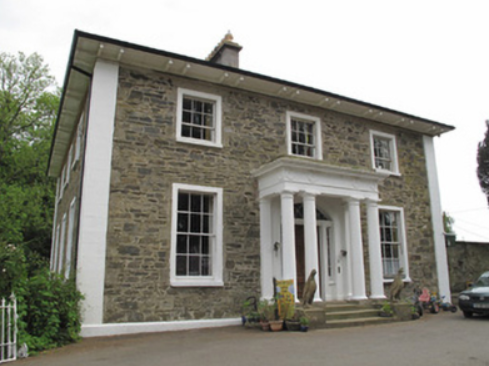
|
| Killycoonagh House | Killycoonagh, located on the Forster of Ballynure estate, is marked but not named on the 1st edition 6 inch Ordnance Survey Map (1836). The Ordnance Survey Field Name Book records the house as the residence of the sister of the proprietor Forster of Ballynure. By about 1860 the buildings were valued at £20 and the occupant was Anne Forster. It appears to have been still in the possession of the Forster family in the first part of the 20th century, although it may have been leased out. |
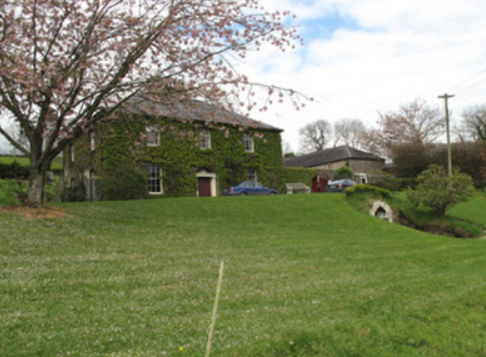
|
| Anlore Cottage | In the mid-19th century Anlore Cottage, in the village of Anlore, was occupied by Jason Crawford and valued at £10. It was held from William Forster. A building is still located at this site. | |
| Lisabuck | The Ordnance Survey Field Name Book records that ‘The residence of the Sloans stands near the N. side of the townland, it has been formerly a fine house but it was destroyed by fire about 30 years ago and was never properly rebuilt, it has a very large orchard and garden and is occupied by one of Mr Wright’s tenants.’ The 1st edition 6 inch Ordnance Survey Map (1836) shows some buildings and a large garden located near the shore of Lisabuck Lake. By the time of Griffith’s Valuation Henry Jackson held this townland in fee and the building valued at £3.10.0. was described as a herd’s house. A building is still located on this site. | |
| Gortgranard | This house is marked on the 1st edition 6 inch Ordnance Survey Map (1836) and is named on the 25 inch map (surveyed in 1908). It was the home of the Campbell family, Lewis records Mrs Graham as proprietor. The Ordnance Survey Field Name Book describes the residence of Mrs Graham, widow of Captain Campbell Graham as a ‘good building with large orchards, gardens, out houses etc’. In the mid-19th century it was valued at £20 and held by Samuel Campbell from Thomas de Burgh. Samuel Campbell of Gortgranagh died in 1879 and his wife Mary in 1913. Both are buried in Killeevan COI graveyard. Home of a farming family named Lee at the beginning of the 20th century. | |
| Etna Lodge | There was a building at this site, close to the border with county Fermanagh, marked on the 1st edition Ordnance Survey map (1836). However Etna Lodge was built post 1836. It was valued at £14 in the mid-19th century, occupied by the Reverend Charles Walsh and held from William Phillips. The Medical Register of 1885 lists Alexander Knight as resident. This building is still extant. | |
| Green Cottage | This house is marked on the 1st edition 6 inch Ordnance Survey Map (1836) and on the 25 inch map (surveyed in 1908), it is named Green Cottage. It was the home of the owner of the nearby mill, James Knight in the late 1850s who held it in fee. The buildings were valued at £14. In 1876, Luke Knight owned 118 acres in county Monaghan. Members of the Knight family continue to reside there in the first decades of the 20th century. Corcummins borders the Hilton Demesne. |

